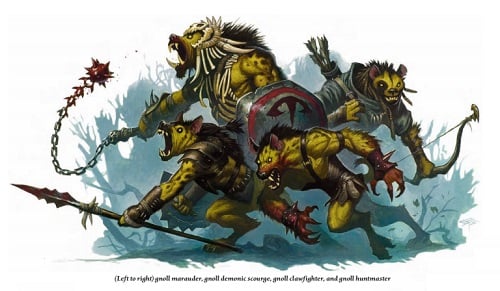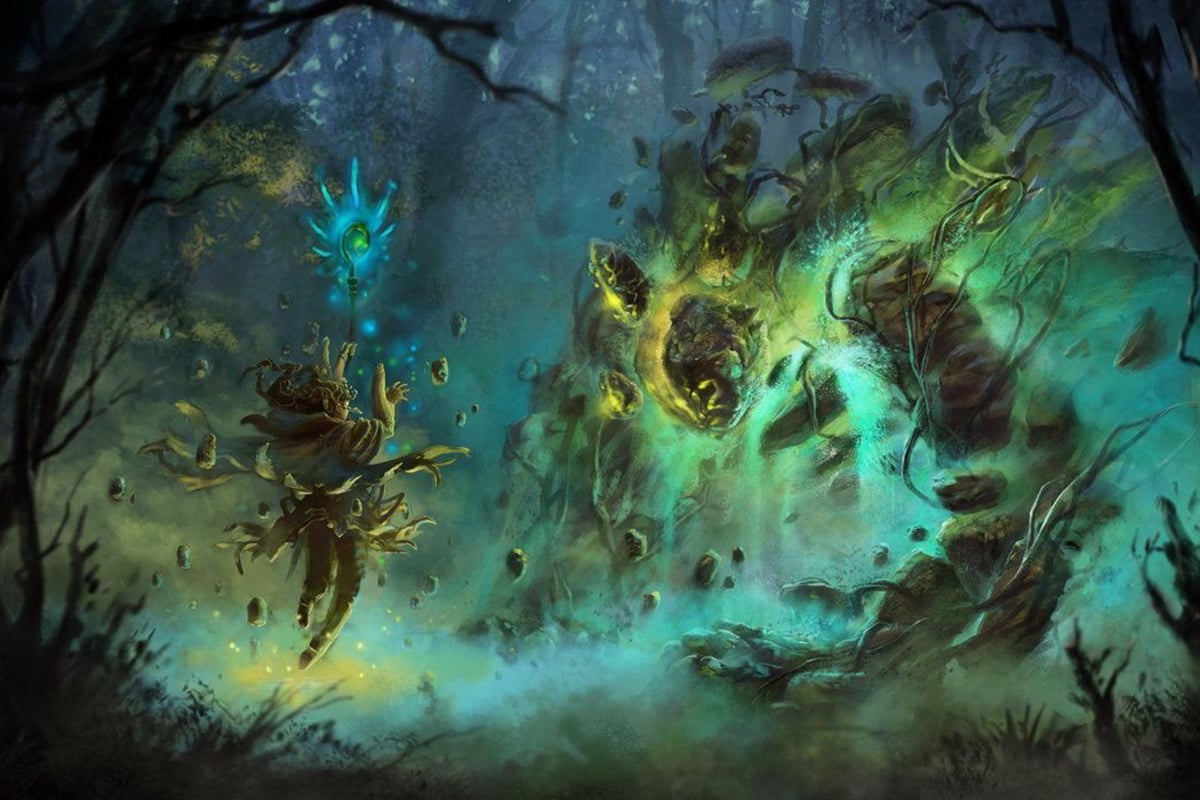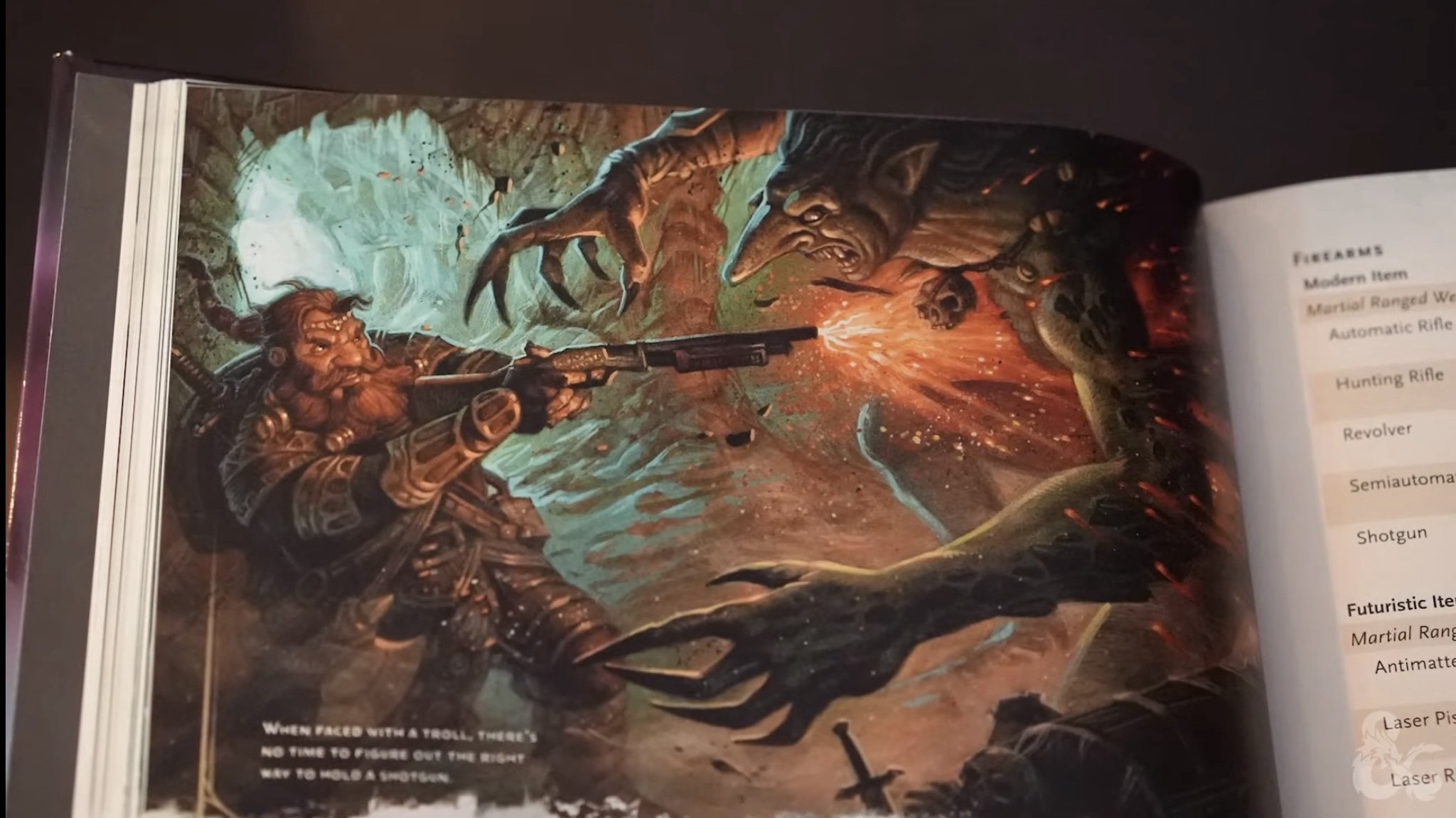Monster behavior rules in the new Dungeon Master’s Guide give DMs some extremely fun levers to play with. But will YOU behave?
The new Dungeon Master’s Guide is out today in stores and online everywhere. It’s a fantastic book for new DMs, and a handy tool for experienced ones. You can read our first impressions review of it here.
One of the reasons the book sings is its practical advice for DMs. There’s something for every style of DM here. Including many things that seem obvious in retrospect but are real fun to think about regardless. Like the rules for monster behavior.
Monster Behavior Rules: Interparty Conflict Isn’t Just For PCs Anymore
Chapter 4, the Creating Adventures chapter, has a whole section on Monster Behavior. And it’s full of helpful ways to make your encounters feel different. While the section is intended for social interaction, the rules invariably lean to combat.
That makes this section both hilarious and helpful. Here’s a quick overview:
- Monsters have an attitude: Hostile, Indifferent, or Friendly
- Monsters also have a Personality that shapes their overall interaction
- Monsters have Relationships that make them dynamic
- Monsters have Reactive Tactics that determine what they do when adventurers kick in the door
It’s all simple stuff, right? But there’s a lot of game and narrative mechanics to get in there and tinker with. The Initial Attitudes of Hostile, Indifferent, or Friendly all refer to the social dynamics published in the Player’s Handbook. Someone’s mood can be improved through Persuasion checks, but only if they’re persuadable. No more “but I rolled a nat 20” mind control happening (unless you want it to).
But where we start to see the flesh on the rather simplistic skeleton of D&D’s “social interaction rules” is in the personality and relationships section. Monster personality is all about what the monsters broad strokes, initial impression is.
Cowardly goblins might surrender easily. Greedy bandits might do anythingfor treasure. It’s basically an adjective and a want that you put together. There’s a 1d8 table of pregenerated personalities, but it’s easy enough to make more.
That plays in to the monster relationships section. Some monsters may get along. Others might hate each other. These rules are all about making your monsters feel like they aren’t just waiting in a room for PCs to come in and kill them.
Two monsters might have a bitter rivalry and want to see the other suffer. One monster might be worshipped by the others, who will in turn die to protect the object of their worship. Another might be in charge and the other monsters take action to impress the boss.
These are little narrative flourishes that can give a sense of story to an otherwise bog standard encounter. This is how you make one group of goblin bandits different from the next without having to change much in terms of stat blocks. It’s all about giving situation and context to the weird little knife guys.
Reactive Tactics For A Living Dungeon
Of course, this is D&D and that means fantasy adventure fights break out all the time. That’s what you want, that’s why we’re here. And the reactive tactics listed under the monster behavior section give you plenty of things to think about in terms of combat.
Fortunately, there are some pretty easy to use rules accompanying the “narrative advice.”
- Ambush: Monsters alerted to adventurers might leave their current location and Hide, waiting to attack adventurers at an opportune moment (including while they’re fighting someone else)
- Fortify: This creature attempts to fortify its environs, using furniture or heavy objects to block the path. This increases the DC to force open doors by 3 or creates difficult terrain. Either way, the monster takes Cover so it can make ranged attacks with an extra 2 AC
- Hide/Flee: The monster runs away or hides, and tries to alert other allies
- Investigate: This monster pokes its nose in whatever situation it hears.
Some monsters might even prepare defenses ahead of time. Especially if they are in a lair that has been recently raided by adventurers. Or if scouts saw them coming, or maybe even a spy in a nearby settlement heard they were planning an “adventure” in their local area.
Either way, these tactics can get amped up. The sky is the limit. But these rules help your encounters feel alive, in a good way, not a creepy one.
Happy adventuring!
Don’t Miss:
Read more at this site





